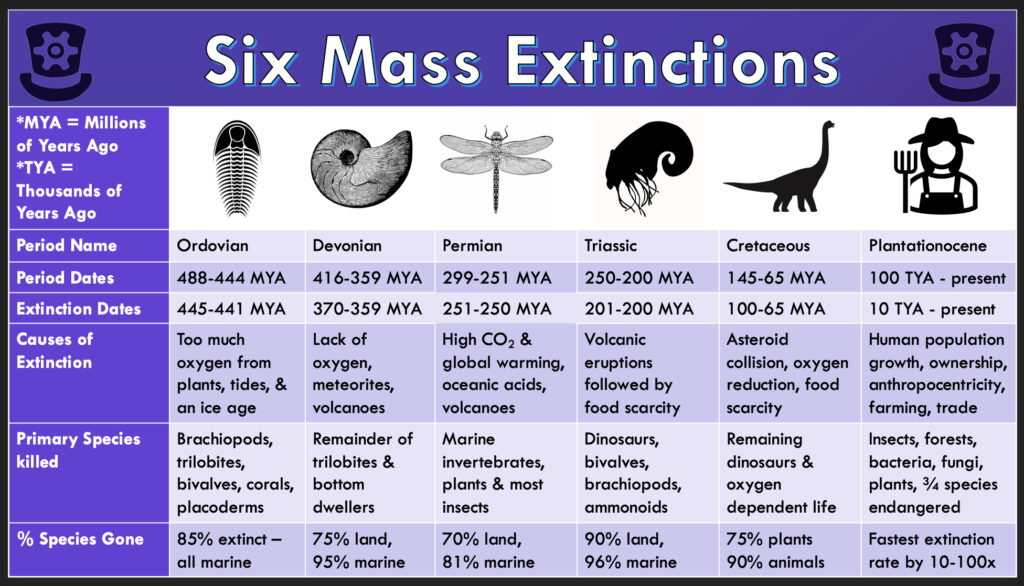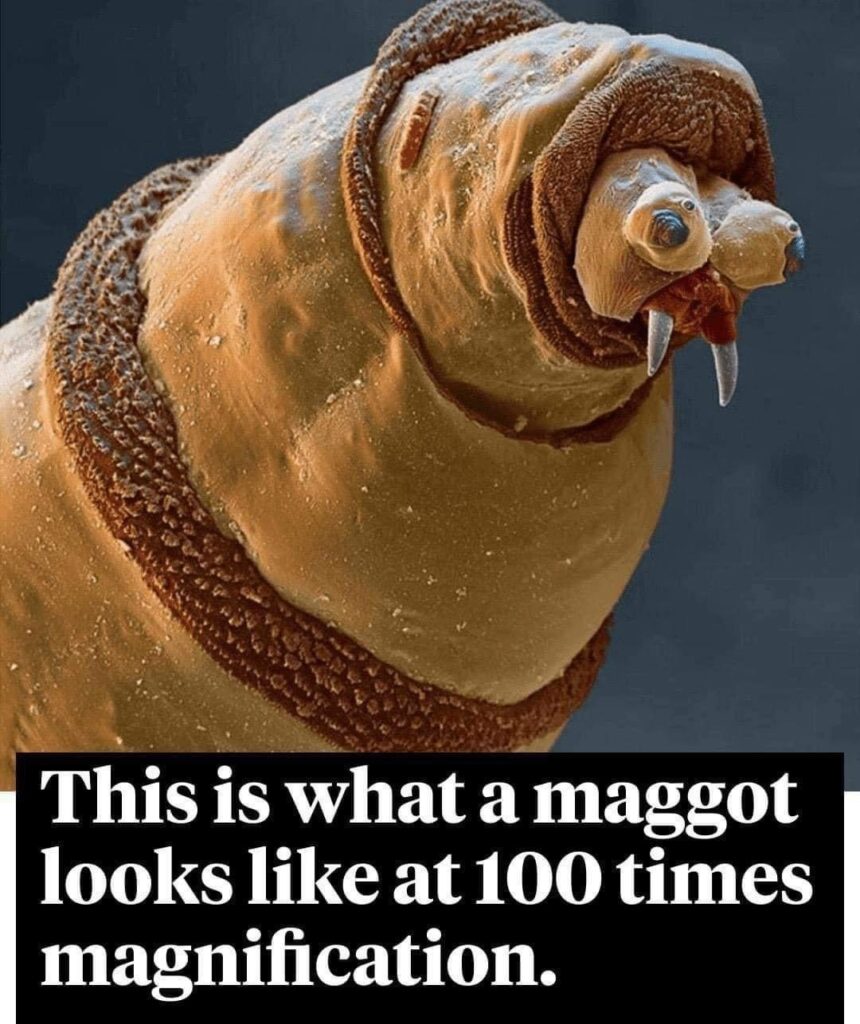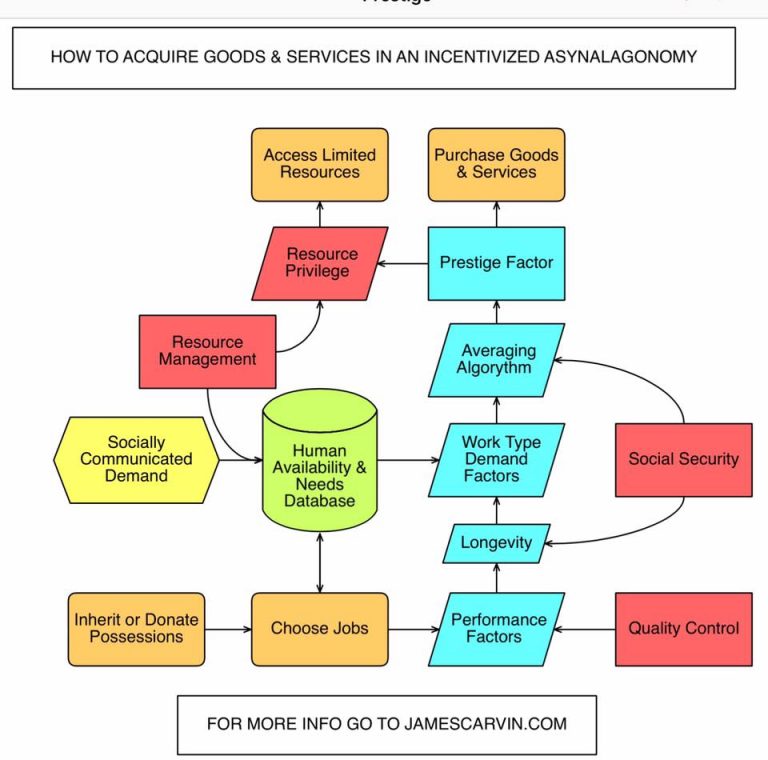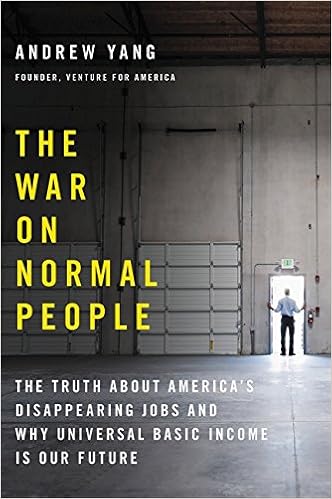Nobody can count to a quintillion in their lifetime but we do have more than a quintillion problems. The fact that we face human extinction in the light of unrelenting population growth is just one of them.
Episode One
When I started the Quintillion Project I had been contemplating solutions for over forty years. If you know me, you know I think in solutions, not problems. And there was quite a predicament. For one thing, to address a level of problems that was pointing to the end of all life on the planet, meant proposing seemingly crazy solutions – especially forty years ago. So, rather than being thought of as crazy, I chose to be thought of as a clown. As a first attempt, my introductory video for the Quintillion Project balanced a serious me against an Irish clown called Patty O’Carvin. No one was going to take it seriously, I thought. So why try? Here’s that video. Enjoy!
Serious Math
Just to be sure that we’re all on the same page here, exponential growth in the real world tends to top out. It doesn’t keep multiplying. A million bacteria on an avocado may double in number once a day. At first you don’t notice 1 million, 2 million, 4 million … Each tiny bacteria consuming an ever-so-tiny piece of that avocado will leave plenty of deliciousness for you in your fruit bowl. But you’d better eat it before the bacteria do because 8 million, 16 million, 32 million and 64 million will do more than soften it up. Still, the bacteria multiplying won’t take over the world. On the other hand, 64 million might not reach 128 million the next day because the avocado is too small for that many to eat tiny pieces of. That avocado will rapidly disintegrate in about a week. The total bacteria population may never exceed 100 million on that once tastey fruit. In an envnironment of rapid exponential multiplication, it’s never long before the population growth will top out, and start declining due to lack of resources. So to be sure, you missed the point if you imagined I thought exponential growth would endlessly continue. The questions you should be asking are what part of a rotten avocado Earth would you like to have? Or could we, perhaps, think of a way to prevent it from deteriorating in the first place? If you asked yourself those questions, then you got the point. Furthermore, I do have solutions, even at this late date for Earth, but I am aware that too few people are ready for them. Most haven’t really considered the nature, depth or immediacy of the problems. How can you agree to a solution if you don’t even know what the problem is?
Sixth Great Extinction.
What if the idea that man was created on the sixth day is utterly prophetic and really refers to days as epochs deliniated by mass extinction events that were yet to come? If that were the case, the result of the sixth day, the one in which man was created, would not yet be complete. In this interpretation, on the first day, the Earth was formless and void and there was no life for 4 billion years except for God and there was light and stars and heavens for 13.2 billion years after the big bang but no consciousness other than God’s to measure that time with. On the second day otherness happened – lives other than God’s, not necessarily lives that could be seen, not even necessarily conscious lives. Plato and the gnostics would love this take on the Bible. It was symbolized by the fermament of the heavens. The fact that the serpent was already a deceiver prior to the fall of Adam makes angelic life, and fallen angelic life, a great candidate for day number two in an allegorical sort of way. It indicates division into a Multiverse of heavens. Day one was perfect. Just God. Complete and whole. Plato’s η𝒗. Day two – separation and division. A different sort of life, beginning with extinction and death, first of fallen angels. And on Earth, the oceans had their first life 500 million years ago at the start of day two in the fermament below. I could go on. Use your own imagination. I avoid Bible discussion on divisive topics. People don’t base their opinion on reason. They use faith. Faith has a lot of circular arguments and nobody on either side of the debate is listening, so what’s the point? Division is still alive and well among us. The story is told again at the tower of Babel, calling for a new Pentecost.

Crisitunity
As we find ourselves on the brink of extinction, there is still one thing we might agree on. We might view this as a “crisitunity.” Dr. Lawrence Krauss explains that a crisis can be an opportunity – a crisitunity. It’s a term the Simpsons attributed to the Chinese. Krauss explains how something can arise from nothing, an infinite number of Universes even, and how empty space has energy, how to measure how much it has, how large the Universe is and whether it’s imploding, stable, or expanding. For Krauss, this all fits together into an elegant mathematical model for the Universe that can be used to accurately predict things, making cosmological and quantum physics the mother of all knowledge, thanks to something cosmologists call Omega (Ω). The scientific community is quite impressed with the math they’ve come up with, putting one piece of the puzzle together after another, even if gravity is too weak a force to measure so far. The missing part of the ultimate single formula is Krauss’s “crisis.” We are, indeed, working on it. And for researchers, that means opportunity. More money is needed in Universities, because we’ve proven there is a problem to solve. That’s a good problem to have. It’s an opportunity that builds things like Large Hedron Colliders, multi-billion dollar Laser Interferometer Gravitational-wave Observatories, and fancy new telescopes.
Pamalogy
If only career opportunities for cosmologists and quantum physicists was our only problem. Dr. Krauss is heavenly minded and I share in his wonder. He’s also introduced as a humanitarian who sees the twentieth century itself as uniquely challenging. He jokingly complains that Republicans are part of the problem and gets a measure of laughter in his audience in affirmation. I’ve noticed that in academia, disdain for the right usually relates to climate change denial even more so than civil rights questions, though what Dr. Krauss is lauded for is his advancement of logic in public discourse. That’s why I think he would love Pamalogy, even as an avid atheist. I might ask for his help with the Quintillion Project and the CounterChecker both.

I should explain that Pamalogy is awesomeology. If awesomeness is maximized, the result is that than which there could be nothing greater. Pamalogy assumes this definition entails that if maximized awesomeness is true, then every good thing must happen. This would require a multiverse. Furthermore, God would be a good thing. Therefore, maximized awesomeness would include God too. Maybe we should just capitalize Maximized Awesomeness because it is God. Pamalogy explains the why. Dr. Krauss explains the how. And I wonder why God’s energy can’t serve as a fair explanation for the quantum fluctuation of nothingness. With the infinite number of Universes Dr. Krauss says were created the same way the Big Bang was, maximized awesomeness has plenty of chances to be real. And if in one or more, by definition of what Maximized Awesomeness is, then in all. Please note that I’m not repeating Alvin Plantinga’s modal ontologocial argument for God. When it comes to the Multiverse, Dr. Krauss and I are both talking about actual worlds – not just possible ones. Now, if you want to dig deeper, you may want to compare the transcendental empiricism of Deleuze with the transcendental idealism of Kant. Kant’s criticism of the ontological argument is that defined concepts are not realities. Because of the Infinitude of the Multiverse, I disagree. But I digress.
The bottom line is that there are differences between me, Plantinga and Krauss. If you want to know more, you should take the Pamalogy 101 course I’ve been developing. I only ask that you wait for the second edition, which is on the verge of release and offers much more than the beta. Frankly, I only put the beta version up as a placeholder. Thank you for your patience.

Think Locally
Today, for the sake of space, we can put an argument for God to the side. This will leave us room to talk about the pending apocalypse – not necessarily one that requires theism. We don’t have to abandon Krauss’s politics either. If abortion rights matter, we should measure population growth. Let the right defend itself. Is free continuous multiplication sustainable? How does the math of population growth work within local frameworks of a Multiverse? What about if there was just one Universe, the one you suppose you are conscious in? What is sustainability with or without a Multiverse? Either way, the problem is the same. I talked about this in Episode 17. You have subscribed to the Pamalogy Society Podcast. Haven’t you?

Love Bugs
If we are interested in logic and in solutions, then neither politics nor religion should get in the way of this. There’s too much at stake. An extinction crisis is indeed apocalyptic by any measure and involves far more than acceptance of temperature problems. It’s richer than that. Among other things, and whether we know it or not, it involves a love-hate relationship that we need to have with bugs. Yes, you heard that right – bugs. Conservatives suppose the only reason a concensus of reasearchers predict a pending climate catastrophe is due to the heavy funding of research designed to prove it, (Karl Popper not withstanding). Others, such as Steven F. Hayward, insist no such consensus really exists. It’s a misquote gone awry.
Wouldn’t it be nice if global warming was truly a farse?!
Unfortunately, wishful thinking does not equate to truth. I’ll also admit that I haven’t peresonally taken the time to examine the evidence. Have you? Maybe you have, but I’m no climatologist, so I’ll grant that maybe conservatives are right, as much as any genuine post-modernist could. But on following the research money, I’d have to point out that conservatives are easily rebutted by the fact that it has been the work of unfunded amateur entomologists in Denmark and Germany that has measured the recent dying of species. According to Brooke Jarvis, completely unfunded, pre-climate-change-era alarmists did the work. And they haven’t just counted extinctions – they’ve been quantifying population declines for over a century.
Indeedy doodlebug, thanks to numerous hobbyists, working purely out of enthusiasm, we can be certain that the sixth great extinction event is already well under way. We can measure it by taking an insect inventory, which oddly enough, “swarms” of volunteers have been somewhat obsessive about doing for a very long time. They’ve discovered that a present mass-extinction has been taking place and is accelerating. Be aware that even with cataclysmic events like giant meteorites slamming into the planet, past mass extinctions have been slow events involving chain reactions that took millions of years. The present crisis, as they’ve catalogued it by counting bugs, involves an extinction rate a frightening ten to a hundred times faster than any before it. The pace of the current extinction is just slow enough to escape the notice of the average perfectly normal person so that we do nothing about it. It’s like the perfect storm when we add ignorance to the brew. Fortunately, the hobbyists, (yes, even nerdy butterfly catchers), have truly documented all this. So put your doubting aside. It’s reality time.

The above chart shows the relative length of extinction periods in red. I simplified this from a number of sources and I’ve used a term coined by Donna Haraway for the latest extinction period – “plantationocene” – in the chart below. The use of Haraway’s term conforms to my general view that the primary cause of mass extinction in the current period began with farming and the commerce which followed it, replacing the relatively benign-to-nature tradeless economies that preceded the neolithic age. Haraway’s pointing to the plantation evokes human slavery. It may be weird to pronounce, but stumbling on it forces me to think. It is a value-loaded word that brings out the worst of capitalism. It also points to a sense of land ownership. Ownership divorces itself from community responsibility in the form of perceived property rights, not to mention being stuck in the ground through its illiquidity as real estate. While bugs aren’t the only victims of the get-off-my-land, get-off-my-lawn era, they offer an indisputable measure of human influence in the present mass extinction, which is demonstrably already underway and at a far more rapid pace than any of the previous extinctions Earth has known.

How odd that multi-generational longitudinal studies ever occured without grant money from Al Gore! To most people, bugs are just pests. Few stop to realize how important they might actually be for our survival. But by some act of grace, there seems to have been enough OCD in the human gene pool to spurt out multiple hordes of European entomology enthusiasts just at the right time in human history – to maybe save us through the data they’ve collected, should we become aware. It’s data that leads to questions like “what happens if all the plants die because there are too few to pollinate?” … and … “what if the shrinkage of plant life leads to a lack of oxygen and an acceleration of CO2, with or without the help of fossil fuels?

Forget global warming. What if we all just suffocate? It wouldn’t be the first mass extinction brought on by lack of oxygen. Ecosystem interdependencies involve bugs. As complex as they are, insects are not something a growing human population can afford to ignore. While most species have shrunk in number by 60-90% over the past century alone, guess what species are rapidly growing? Stuff on farms like cattle and crops … and people. We’re almost the only exceptions. Can you say “human influence” now? Certain new strains of viruses and parasites will grow along with us too. Isn’t that nice?
Did you know that on average, human beings carry over 200 types of parasytes? And other species, like locusts, these also can lay dormant until they go on sudden crop-destroying eat-fests. Locusts are survivors! Sure they can be pesty, even devastating, but we need bugs for many reasons too. For one thing, they feed our birds. I don’t know why we need birds, probably because of the bugs they assist with their poop-alizer. I do like to watch birds and enjoy their company. But now, like it or not, we even have activists dedicated to supporting parasite biodiversity. This could be a good thing. Who knows? Or maybe politics will ruin it. As for bugs, a little common sense could be applied. Who else will recycle our cow dung? For that, we need something even grosser than bugs. We need maggots. Okay, a maggot is a kind of bug. They’re larvae – but it’s a simple fact. So, please learn to love it all. If we dont learn to love bugs, and their hungry children born in bird dung, cow dung, people dung, dog dung … then we’ll die. A death bell will knel with a ding done of undone dung.
Gotta love maggots. The end.

Parasites, Microbes & Bacteria
The little things seem to be at the heart of what can make life most awesome. In fact, Dr. Krauss and his peers in cosmology and quantum physics are usually very quick to demonstrate how little things are what big things depend on for their existence. The invisible bacteria, microbes and parasites – too small for us to see without microscopes, which we depend on for life – are large by many measures of magnitude in comparison to sub-atomic particles. We are reluctant to value this particular level of small stuff because, like bugs, it all grosses us out. We are xenophobic to the microscopic largely from a fear of the unknown.
Maybe we’d be more inclined to value it all if we considered something more knowable that each level held in common. We are all made of chemicals. There are only 57 known species of sub-atomic particles making up those chemicals. There are only 92 naturally occuring types of atoms from which they are made. It’s what human and tapeworm alike are made of. Does this tidbit help? Maybe not. But as an example of the importance of microbes, in Florida, where I live, we have algae blooms. They are made of bacteria that love high temperatures, still water and certain nutrients that multiply in those conditions. They kill our fish and plants. Maybe Florida farmers are to blame, or the water management related to it, but there is little agreement about causes, cures or prevention. When and why will algae blooms outpace efforts to keep the water flowing or the heat from increasing? The question is complicated by things like mutualism in ecological communities. The variables seem endless. Maybe we’re in over our heads. Here’s Hank Green to help simplify the complex …
Transcending Athropocentric Axiology
We would do well to consider interspecies dependencies and calculate how to optimize our relationships if we could. Unfortunately, anthropocentricity blinds us to the importance of such calculation. The crux of the plantationocene problem relates to the force not of human good will, but of the disproportionate power that individual will has over the best interests of all in a world of competition for resources and niche specialties. Primarily I mean individual owners and consumers. And when I say “all” I don’t mean all humans. I mean all life on planet Earth, including human life.

Being at the top of the food chain comes with certain responsibilities. If other species could vote, or at least had a voice that we could hear, we might gain a sense of right and wrong that was more inclusive, one that would see the rapidly declining other-species populations as a warning sign – a sort of tenament wall prophecy that we had the political will to heed. The silence is deafening. Most of us don’t realize just how interdependent we really are. And those who do know are unable to tell others. They have a distorted voice – one that is amplified in certain quarters, filtered in others, modulated by controlling political forces in both arenas, and forced to travel through muck-ponds of cognitive dissonance. To boot, bug love lacking, the value of their words is also almost always measured in terms of what benefits humans rather than the benefit of any other species for its own sake. Donna Haroway, a biologist who wants to redefine family as primarily relational and secondarily genetic, calls for greater unity with the non-human. She is described as a radical feminist. The treatment of women as property that began in the agricultural age, which disregarded women’s welfare and voice, is no doubt at the heart of the “plantationocene” rapid eclipse that she sees. She also sees us as an emerging new cyborg species. And in utter liberation from the plantation, she posits an Afrofuturist feminism, as well. We are now a technological species, socially redefinable. Produce may matter, but so does community. As technologically connected social beings, we don’t necessarily serve to reproduce. We can replicate. We need no fatherly pattern or patriotic emotion or memory to honor. We can transcend.
Ideology versus Pragmatism
Haraway is a socialist. The postmodern label doesn’t change this fact and there’s not a single person I’ve mentioned here that I’m endorsing. To distance socialist failures from ideals, the appelation “state socialism” is typically applied. In real terms, I do have to ask whether any true socialism can exist outside of state socialism if it isn’t pure anarchy. I’ve run across no shortage of anarchist socialists in my lifetime but no one proposing solutions for anything other than statist socialism if it wasn’t anarchy. The problem with anarchists is coordination. When human population growth needs to be curbed and reversed to save the planet from mass extinction, anarchy doesn’t do the job. Instead, what I proposed was the HAND System – a Human Availability and Needs Database System. Instead of revolution, just sign up on a web site with a critical mass figure determining when to move forward with digital, state and national boundary transcending citizenship. Instead of expecting the conversion of nations, work on smaller scales and prove they can work.
The HAND System is an incentivized asynalagonomy. It is not barter. There is no trade within the community of participants. They are simple resource-based economic systems, and unlike the existing programs using this name, they are not egalitarian. Everyone has equal opportunity. There is no underprivilege. Tradeless economies that incentivize behavior through earned privilege actually exploit inequality of outcome. As my first Quintillion Project video explains, such privilege can not be traded. It has to be earned and everyone has an equal shot at it. It is exercised as a right once it is earned. It is earned by meeting the stated demands of the network as they change based on user input. The demands of the network are only limited by resource managers. Resource managers work to limit consumption by paying heed to the fragile balance of nature that sustains us as a cyborg species in communion and fellowship with all biology and mineral resources – a single redefined family. As in responsible households that stick to a budget, in some cases this means distributing only to those who have earned the highest privilege. “Whoever washes the dishes gets the corner piece!” In other cases, it means distributing to no one at all. Sorry, there is no cake to share. We didn’t bake one. We build up from the bottom, sometimes doing without. Consider the ant. It works with the resources it has. We can do this too.

Pamalonomies versus Alternatives
As I mentioned at the beginning of this blog, radical problems require radical solutions. Obviously, political realities make proposals like the HAND System deeply impractical to realistically consider. A more pragmatic approach would start with measured baby-steps, utilizing capitalist hybrid mini-models. These I call pamalonomies. Pamalonomies can take many forms but one thing they have in common is they assume capitalist realities and work within existing socio-economic parameters with positive social impact in mind. An example might be a modern guild. Another example might be a user-owned competitor to Uber. The CounterChecker could also be user-owned. Literally any of the projects on the JamesCarvin.com web site’s main page could involve user shareholderships. They could be pamalonomies. And there are many other examples besides my own. Food co-ops are a common example, but our existing corporations might also participate. My brother’s book, A Piece of the Pie, explains why the employee stock ownership plan at Publix Supermarkets works so well. Many employers, not just Publix, have incorporated ESOPs with great success. These may not be aware of it, but they are one step away from being pamalonomies. All they need for true “pamalonomy” status is an optimal strategic vision for positive social impact. A genuine pamalonomy considers the needs of the whole. It fits into the big picture as a piece of the puzzle of optimized awesomeness.

ESOPs don’t always work. They often share too little, but they sometimes work quite well. I wonder whether Marx would have thought of them. They serve as great baby-steps toward the ownership of the means of production.
Generally, I think they don’t go far enough. Imagine what might happen to customer loyalty if shoppers could also earn their own class of stock?
Pamalonomies call for entrepreneurial creativity. In pamalonomies, any distribution of stock or other benefits is dependent on behavior and participation. Contrast this with egalitarian socialism. Social transformation is more easily achieved through incentives than through awareness or through ideals, as important as these may also be.
This important distinction is one of the reasons there is no connection between incentivized asynalagonomies and the Venus Project of Jacque Fresco, or the Zeitgeist movement of Peter Joseph. A resource based economy that is built around planning and egalitarianism is just state socialism on a small scale, or perhaps a day dreamer’s globalist fantasy. A pamalonomy, by contrast, is a realistic step, though a far more modest one, towards the ownership of the means of production that solves Marx’s class crisis directly. It provides a smooth and steady transition through emerging competitive entities rather than through revolution. Incentivized asynalagonomies, utlizing the HAND System, are most likely to arise gently, if they ever do, through waves of pamalonomies that prove themselves over time. Conflict and strife are not required. Let them slow-bake in the oven. Compare …
From the above, we can see that Peter Joseph envisions a worldwide cooperation but he says nothing about how the process of overriding presently competing national interests would somehow evolve into that vision. He can’t -because it involves violent protest and government overthrow. Where can successful non-violent socialist experiments be found? In practice, we find them primarily on micro-scales. The Israeli kibutz, for example. But such examples are rare and their rarity suggests they are unlikely to ever achieve broad usage. On a national scale, when it comes to any form of socialism, we are always back to state capitalism or state socialism, whatever you may wish to call it.
Why Communism and Resource Based Economies Fail
Let’s face it. We are all interested in sustainable development and we share goals, but the economy of even the most progressive and successful European nation, still involves trade. Therefore, it cannot be called socialist, or communist, or a resource based economy, and it is a far stretch from an incentivized asynalagonomy. It still involves currency. By contrast, user owned and earned entities, which I call “pamalonomies,” may not end capitalism, which is certainly problematic, but they are not only inherently fair, they also cut out the middle man, making them more efficient. Furthermore, they retain property ownership.
Even the HAND System, to which pamalonomies ultimately point, retains property ownership, just not trade of that property. We need to be clear. Peter Joseph advocates resource access rather than ownership. While it may be true that sharing property can be more efficient than letting it lay dormant while not in use, shared use of property also takes away from the property’s value to an individual or family through wear and tear and invasion of privacy. An ideal tradeless economy, I think, would allow willfully shared access but wouldn’t demand it. In an incentivized asynalagonomy, part of what privilege buys, once earned, is the right to access those forms of property the members agree to. It is for true personal possession and ownership, though not for trade. Planning is a matter of individual demand.
Joseph says nothing about who is in charge of planning his efficient system. In the HAND System, planning is accomplished by requests filtered through elected resource managers who are trained in sustainability and evaluated by audited auditors in a system where everyone’s work gets checked. High demand requests mean proportionate production of whatever is being demanded unless what is demanded involves resources that are in short supply, as per monitoring by resource managers. The better the job resource managers do, the higher their own level of privilege. This means they can access property like everyone else and their own service involves accountability. In the HAND System, if anyone wishes to share their property, they can release it back to the resource inventory. Time-shared property can also be a class of property, but it would not be the only type of property, as in Peter Joseph’s system.

The Problem with the HAND System
Having said all this, I need to reiterate once more that the HAND System, like all resource based economic systems, is too radical a leap to be practical as an immediate step. Not enough people would be willing to trust such a system right away. We are set in our ways. This is why I worked a grandfather-plan into the system, so that no one loses anything they presently have in the existing economy unless they voluntarily contribute it. But even so, the ideological assumptions people have would nevertheless prevent any such change without tremendous resistance, even if a vast majority agreed. We need to be realistic about this. Pamalonomies, by contrast, come in all shapes and sizes and fit much better into the real socio-political environment of today. And there are many successful quasi-examples. Therefore, they are more likely to proliferate. And by the way, Pamalonomies are also likely to restore a middle class. Presently, many hope a Universal Basic Income (UBI) can supplement a growing gap between the owner class and a working class facing replacement by technology and automation.

The Problem with UBI
I have my doubts that a UBI can do any more than create and sustain a welfare class that lives in poverty. I am concerned that it would never be able to compete with the inflation rate and serve only as a false hope. Maybe I’m wrong.
Proposal
I propose that instead of a plantationocene solution like UBI, or a more visionary solution like the HAND System, that we look to Pamalonomies as our answer for today. Let’s look for socially, economically and environmentally conscious companies that are willing to let the users of products and services become shareholders, both workers and consumers. I think this is a much safer idea. What if there was no middle man redistributing wealth and therefore no UBI to concern ourselves with because it was tied in with the corporate profits we already shared? That way the government wouldn’t have to borrow money and tax us more to pay for UBI.
Episode Two – Pamalonomies
User ownership is half of what pamalonomies are. The other half is social commitment. Just don’t expect change overnight. This is gradual. Pamalonomies will work with and against existing capitalist hegemonies, until they are replaced. It will be a slow process. Pamalonomies have to compete with them, and out-perform them. Then and only then will they emerge. It is a deliberate, yet natural transformation.
In being deliberate, we can take steps to enable and protect pamalonomies. They will require legal support and protection so they aren’t tied up in court by greedy oligarchs and technopolies with highly paid legal staffs. Those initiating pamalonomies need to learn, by trial and error, how to avoid the internal conflicts micro-ownership lends itself to and navigate a difficult path. Let’s be real about this. It’s hard enough to have one partner. How will we fair with thousands or millions? What lawyer won’t jump to class actions when they can? This is why we need a regulatory environment that protects and favors pamalonomies. And we need to do this now. We’d better ask these questions and find solutions very quickly. The sand in our hour glass, quickly running out, is literally oxygen, if not excess carbon.
Fortunately, Regulation D and equity based crowd funding, as well as micro-investing generally have already proven that mass ownership is achievable. For this reason, the Pamalogy Society would like to fund the Quintillion Project. Don’t let Patty O’Carvin fool you. The Quintillion Project looks at the current crisis soberly and sincerely. A forthcoming well-underway worlwide extinction is nothing to laugh about. So with all this as a fair background and without futher ado, allow me to present Episode Two of the Quintillion Project. It’s a story about an impossible new species of duck I tracked for an assignment for a class I took at ASU. It’s titled, “Pamalonomies” …
Click here for the blogcast transcript page that corresponds to this video.
